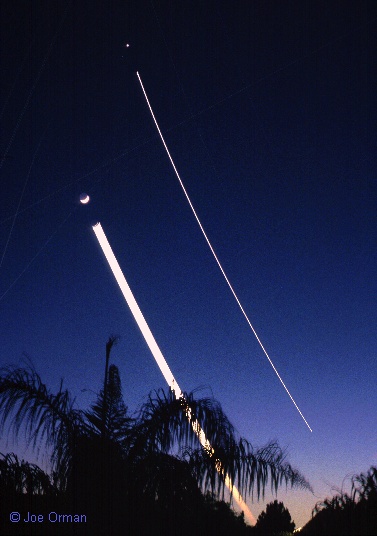Credit & Copyright: Joe Orman
Explanation:
Orbiting closer to the Sun than planet Earth,
bright Venus
always appears to be near the Sun's position
in our sky and
often shines near the
horizon in
twilight hours.
In fact, after posing as the brilliant
evening star
for the first half of this year, Venus has now
swung around its orbit and is emerging in the predawn twilight as the
morning star.
Taken during its stint as the evening star, this
imaginative long-exposure photo,
of Venus and a 2-day-old crescent Moon gives the
illusion of the pair "falling out" of the western sky.
After an initial short exposure captured the Moon and
Venus, the lens was covered for a few minutes, then left uncovered to
record the
trails until the Moon had set.
1999 2000 2001 2002 2003 2004 2005 2006 2007 2008 2009 2010 2011 2012 2013 2014 2015 2016 2017 2018 2019 2020 2021 2022 2023 2024 2025 |
Январь Февраль Март Апрель Май Июнь Июль Август Сентябрь Октябрь Ноябрь Декабрь |
NASA Web Site Statements, Warnings, and Disclaimers
NASA Official: Jay Norris. Specific rights apply.
A service of: LHEA at NASA / GSFC
& Michigan Tech. U.
|
Публикации с ключевыми словами:
Venus - evening star - morning star - sky - Венера - вечернее небо - Сумерки
Публикации со словами: Venus - evening star - morning star - sky - Венера - вечернее небо - Сумерки | |
См. также:
Все публикации на ту же тему >> | |
